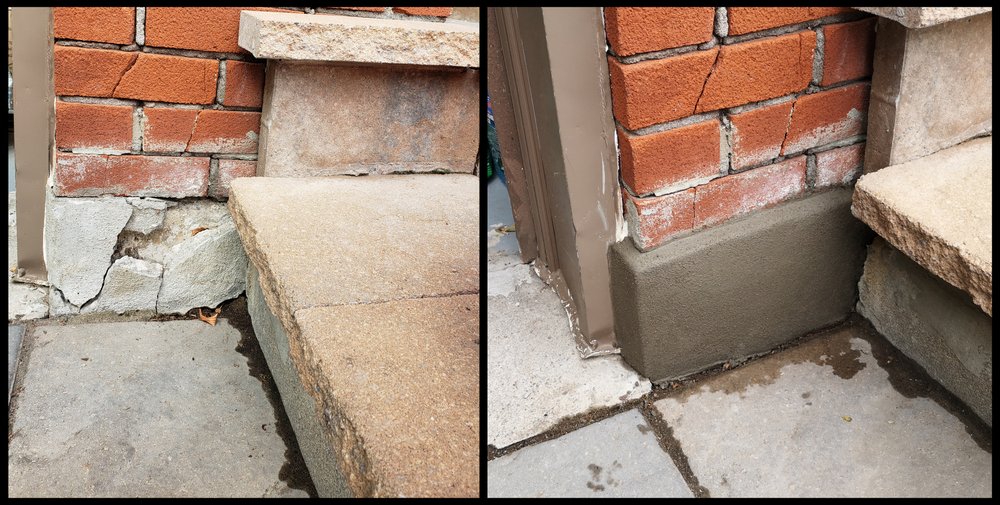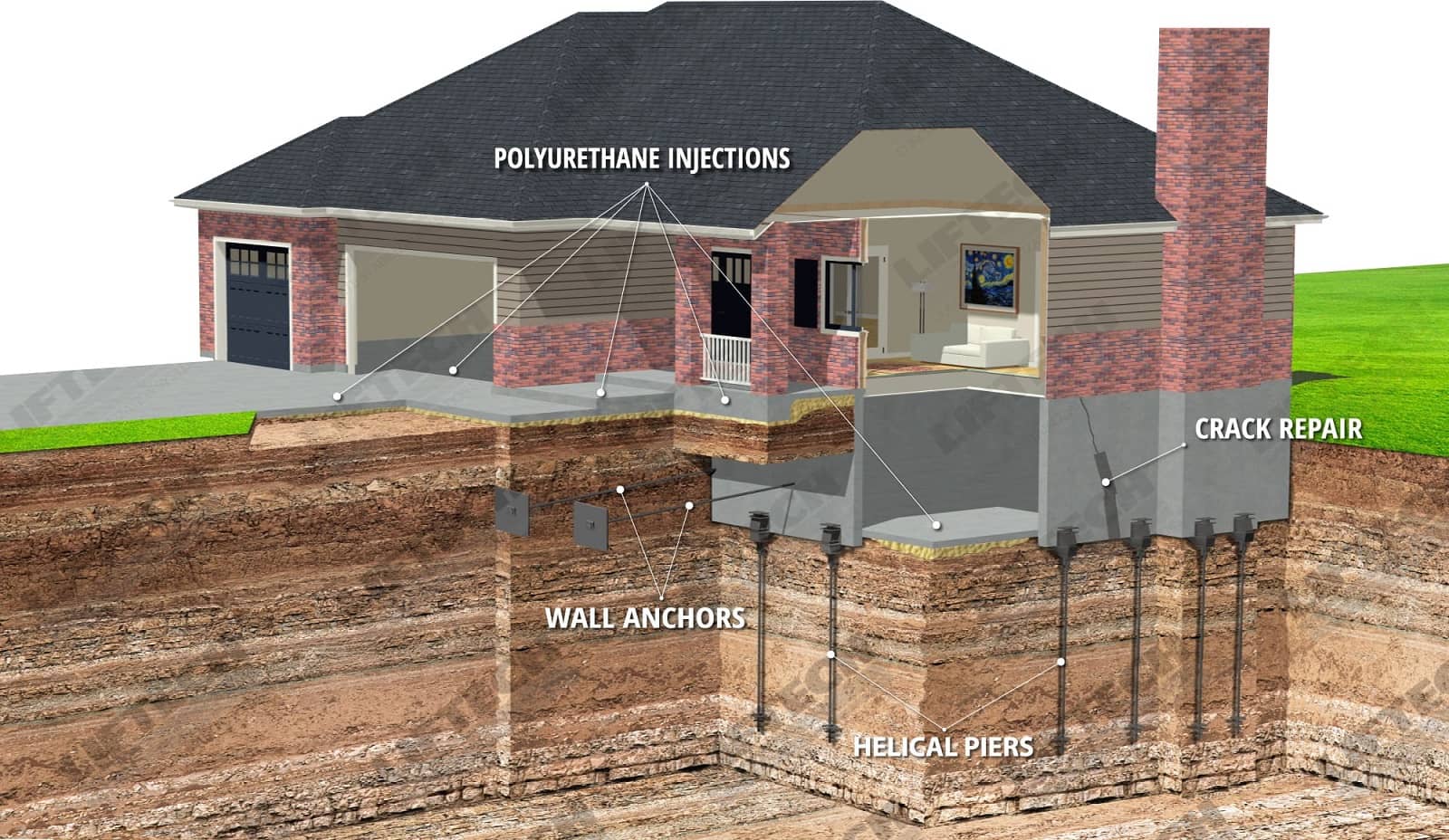Exploring the Benefits of Timely Foundation Repair Oklahoma for Your Home
Wiki Article
Discovering Various Techniques of Foundation Fixing for Different Soil Kinds
Foundation repair service is a crucial element of keeping architectural integrity, especially when thinking about the varied obstacles posed by different soil types. The intricacy of dirt actions under differing problems necessitates a tailored method to repair, making sure optimum remedies such as helical piers for unstable soils or chemical grouts for cohesive layers.Understanding Dirt Kinds
Dirt types play a vital function in the stability and longevity of structure structures, making it necessary for house owners and building experts to understand their characteristics and actions. The communication between soil and structure can figure out the structural integrity of a structure. There are numerous soil kinds, each with distinctive physical buildings that impact how structures are created and preserved.Granular dirts, such as sand and gravel, offer great water drainage and are typically taken into consideration stable. In comparison, natural soils like silts and clays show different behaviors.
Rocky dirts, recognized for their strength and stability, deal excellent support for structures yet may require specific tools for excavation. Conversely, loamy soils, which are a well balanced combination of silt, sand, and clay, usually provide beneficial problems for structure assistance as a result of their modest drainage residential properties.

Recognizing these dirt types is essential for selecting appropriate structure fixing techniques, guaranteeing the sturdiness and security of structures with time.
Obstacles With Extensive Clay
Among the numerous soil kinds, extensive clay presents unique obstacles for foundation stability as a result of its propensity to undergo substantial volume changes with dampness variant. This type of dirt swells when damp and contracts when dry, which can put in considerable stress on structures. These variations can cause foundation fracturing, heaving, and settlement concerns, positioning substantial dangers to the architectural stability of structures.The difficulties with large clay are worsened by its plasticity index, which gauges the soil's capacity to alter form and volume. A high plasticity index suggests better capacity for activity, enhancing the chance of damage to foundations. This is specifically problematic in areas experiencing severe or constant weather modifications, where cycles of damp and dry conditions are usual.
Furthermore, the deepness of large clay layers can vary, complicating the evaluation and preparation of appropriate foundation repair techniques. The uncertain nature of its movement necessitates specialized engineering remedies to mitigate risks. Furthermore, extensive clay can influence energy sidewalks, lines, and driveways, further complicating repair service initiatives. These intricacies call for a comprehensive geotechnical assessment to make sure reliable structure fixing approaches are implemented, emphasizing the importance of dealing with extensive clay difficulties with experience and treatment.
Solutions for Sandy Soils
Sandy soils, identified by their big particle dimension and reduced cohesion, present distinctive obstacles for structure stability due to their tendency for moving and erosion. These residential or commercial properties necessitate specialized structure fixing methods to make sure structural honesty. One efficient service is making use of deep foundation systems such as helical piers or driven heaps. By anchoring the structure to deeper, more secure soil layers, these systems can give the required assistance to combat the shifting nature of sandy soils.An additional recommended technique is the application of soil stabilization techniques. Chemical grouting, for example, involves infusing a maintaining agent right into the dirt, which enhances cohesion and minimizes permeability. This process assists to strengthen the sandy substrate, thus decreasing the risk of erosion and motion.
In addition, installing proper drain systems is crucial in sandy soil conditions. Making sure ample drainage can avoid water build-up around the structure, which usually exacerbates erosion and soil displacement. Methods such as French drains pipes or surface area grading can be used to route water far from the structure perimeter.
Addressing Working Out in Loamy Soils
Loamy soils, understood for their balanced mix of silt, sand, and clay, use a productive base for lots of frameworks yet can occasionally bring about structure settling as a result of their one-of-a-kind composition. This well balanced appearance gives excellent drainage and nutrient retention, making it ideal for agriculture and landscape design. Nonetheless, this very same feature can come to be troublesome for foundations, as shifts in dampness web content can trigger the soil to expand or agreement, leading to resolving.Attending to working out in fertile dirts requires a complex technique. Accurate dirt testing is critical to identify the specific structure and moisture web content of the loam. Once information is gathered, applying proper water drainage services is vital to preserve consistent wetness degrees, thereby minimizing the threat of soil tightening or development. French drains or surface area grading work techniques to reroute water away from the structure.

Innovative Repair Strategies
In the realm of foundation fixing, ingenious techniques are consistently being established to address the facility challenges postured by different soil problems. As soil kinds differ dramatically in their structural residential properties, conventional approaches may not always are adequate. The introduction of brand-new innovations in structure repair work provides a lot more customized options, ensuring stability and long life.One noteworthy technology is using helical piers, which are especially reliable in expansive or unsteady dirts (foundation repair oklahoma city). These piers are screwed right into the ground until they reach a secure layer of dirt, providing solid assistance for the foundation above. This technique decreases disruption and is adaptable to different dirt kinds, making it a versatile service
One more cutting-edge strategy is the application of polyurethane foam shot. This method includes injecting high-density polyurethane foam underneath the structure to load gaps and support the framework. It is a much less intrusive alternative to conventional base, supplying fast installment with minimal disturbance to the surrounding area.
Additionally, soil stabilization techniques, such as making use of chemical grouts, have actually gotten grip. These substances boost dirt toughness and lower leaks in the structure, preventing future shifting. Jointly, these cutting-edge repair techniques provide reliable remedies for the varied obstacles postured by differing dirt problems.
Final Thought

Structure repair work is a critical facet of keeping architectural honesty, particularly when considering the varied challenges postured by different soil types (foundation repair oklahoma city ok). The intricacy of dirt behavior under varying conditions necessitates a tailored method to repair, making sure optimum remedies such as helical piers for unpredictable dirts or chemical cements for natural layers. By securing the structure to much deeper, extra secure dirt layers, these systems can give the essential assistance to neutralize the changing nature of sandy dirts
Structure repair service needs cautious consideration of dirt types to guarantee stability and longevity. Chemical grouts enhance dirt toughness and lower leaks in the structure in cohesive soils.
Report this wiki page